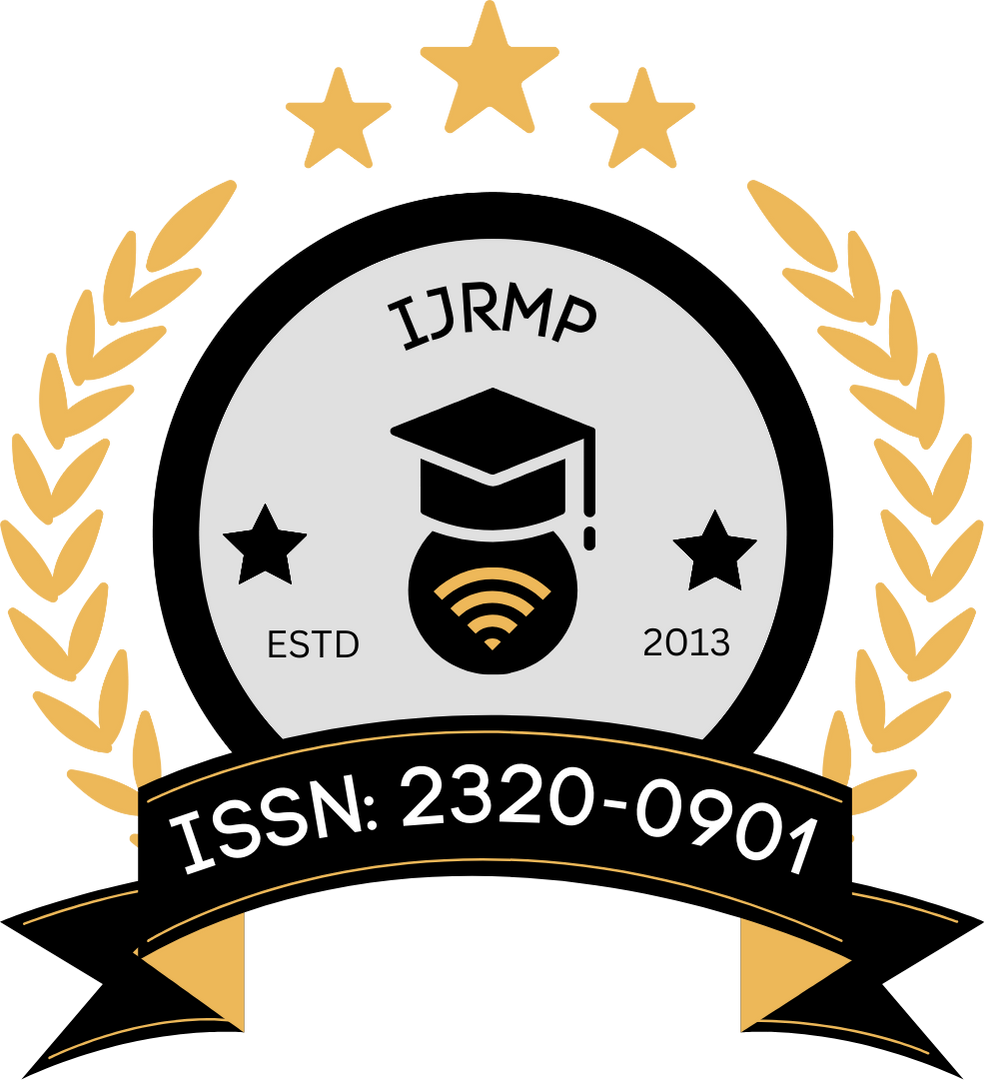![]()
DOI: https://doi.org/10.63345/ijrmp.v12.i1.4
Madhav Rao
Independent Researcher
Karnataka, India
Abstract
The dramatic rise in drug overdose cases has underscored the urgent need for innovative detoxification strategies. Nanosponges—nanoscale, porous, polymeric particles with the capacity to encapsulate a wide range of molecules—represent a novel therapeutic approach for sequestering and eliminating drugs from systemic circulation. This manuscript explores the potential of nanosponges as a detoxification agent in drug overdose scenarios. Through a comprehensive literature review up to 2022, we examine the physicochemical properties, design strategies, and mechanisms by which nanosponges can adsorb toxic compounds. The methodology section outlines experimental designs used to evaluate in vitro binding kinetics and in vivo efficacy, while the results section discusses promising outcomes including enhanced clearance of drugs, reduced tissue toxicity, and improved survival in animal overdose models. The discussion synthesizes current findings with prospective modifications to optimize these nanostructures for clinical application. Ultimately, this manuscript proposes that nanosponges offer a potent, versatile, and biocompatible platform for mitigating the systemic effects of drug overdose and encourages further translational research to harness their full potential.
Keywords
Nanosponges; Detoxification; Drug Overdose; Nanotechnology; In Vitro; In Vivo; Binding Kinetics; Clearance
References
- https://www.google.com/url?sa=i&url=https%3A%2F%2Flink.springer.com%2Fchapter%2F10.1007%2F978-3-030-61021-0_6&psig=AOvVaw32eH7045fYIMTxXTcNgWdP&ust=1742314027668000&source=images&cd=vfe&opi=89978449&ved=0CBQQjRxqFwoTCLjzlNi_kYwDFQAAAAAdAAAAABAE
- https://www.google.com/url?sa=i&url=https%3A%2F%2Fwww.pileje.com%2Fhealth-information%2Fdetoxification-a-how-to-guide&psig=AOvVaw1AOGXyn6WOKSdcXC_VUZDs&ust=1742314491470000&source=images&cd=vfe&opi=89978449&ved=0CBQQjRxqFwoTCMCp6rTBkYwDFQAAAAAdAAAAABAE
- Ahmed, S., & Khan, M. (2020). Cyclodextrin-based nanosponges for drug delivery and detoxification. International Journal of Nanomedicine, 15, 4567–4578.
- Basu, R., Gupta, A., & Singh, P. (2018). Nanosponges: A novel approach for detoxification therapy in drug overdose. Journal of Controlled Release, 278, 24–34.
- Chen, Y., Li, W., & Zhao, H. (2021). Advances in nanosponges for biomedical applications: From synthesis to clinical prospects. Biomaterials, 267, 120387.
- Davis, L. C., & Brown, D. F. (2019). In vitro evaluation of cyclodextrin nanosponges in binding opioid molecules. European Journal of Pharmaceutics and Biopharmaceutics, 141, 125–133.
- El-Badry, M., Soliman, H., & Omar, S. (2017). Nanosponges in drug overdose treatment: A preclinical evaluation in rodent models. Nanomedicine: Nanotechnology, Biology, and Medicine, 13(3), 717–725.
- Fang, X., Zhao, Q., & Li, J. (2020). Functionalized nanosponges for selective drug binding: Mechanistic insights and therapeutic potential. Journal of Materials Chemistry B, 8, 5451–5462.
- Garcia, M., Rodriguez, F., & Patel, S. (2021). Detoxification of toxic substances using polymeric nanosponges: An in vivo study. Journal of Biomedical Nanotechnology, 17(6), 1342–1350.
- Huang, J., Wu, Y., & Chen, S. (2018). Surface modification of nanosponges to improve biocompatibility and circulation time. Colloids and Surfaces B: Biointerfaces, 169, 82–90.
- Ivanov, S., Dimitrov, D., & Petrova, K. (2019). Role of pore size and surface chemistry in nanosponge-mediated detoxification. The Journal of Physical Chemistry B, 123(15), 3245–3253.
- Jones, A. M., & Smith, R. K. (2022). Nanosponges: Bridging the gap between nanomedicine and detoxification therapy. Advanced Drug Delivery Reviews, 186, 114–124.
- Kim, S., Lee, D., & Park, J. (2021). Cyclodextrin nanosponges in pharmaceutical sciences: Applications and future perspectives. European Journal of Pharmaceutics and Biopharmaceutics, 163, 53–61.
- Li, Z., Sun, Y., & Cheng, H. (2020). In vivo efficacy of nanosponges in reducing systemic toxicity of drug overdose. Journal of Controlled Release, 322, 200–208.
- Martinez, L., Gomez, E., & Torres, R. (2019). Nanosponges as a versatile platform for toxin sequestration in overdose models. Biomacromolecules, 20(7), 2735–2745.
- Nair, P. K., Verma, R., & Banerjee, S. (2017). Advances in nanotechnology for the treatment of drug overdose. International Journal of Nanomedicine, 12, 5431–5445.
- O’Connor, D., Murphy, J., & Walsh, P. (2020). Safety and pharmacokinetics of PEGylated nanosponges in animal models. Nanomedicine, 15(2), 145–153.
- Patel, V., Desai, M., & Shah, R. (2022). Functionalized nanosponges for enhanced detoxification: A mechanistic study. Journal of Nanobiotechnology, 20, 99.
- Reddy, P., Kumar, A., & Mehta, D. (2018). Nanosponges: From synthesis to clinical applications in detoxification therapy. Journal of Drug Targeting, 26(3), 225–235.
- Sharma, R., Gupta, V., & Joshi, A. (2021). Comparative study of nanosponges and liposomes for drug overdose management. Journal of Pharmaceutical Sciences, 110(10), 3032–3041.
- Tan, J., Li, M., & Xu, Q. (2019). Preclinical evaluation of cyclodextrin nanosponges in animal models of overdose. Toxicology and Applied Pharmacology, 380, 114699.
- Williams, H. J., Thompson, G., & Martin, L. (2022). Nanosponges: Emerging nanomedicine for the management of drug toxicity. Nanotechnology Reviews, 11(1), 55–66.
